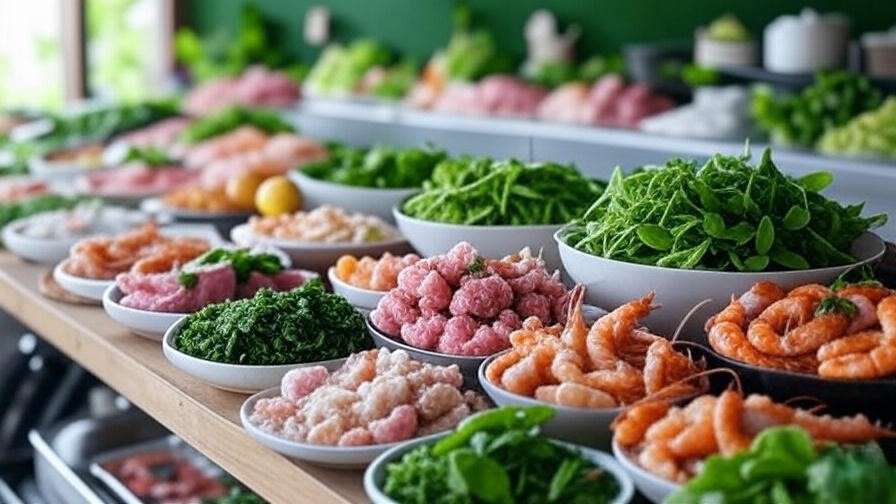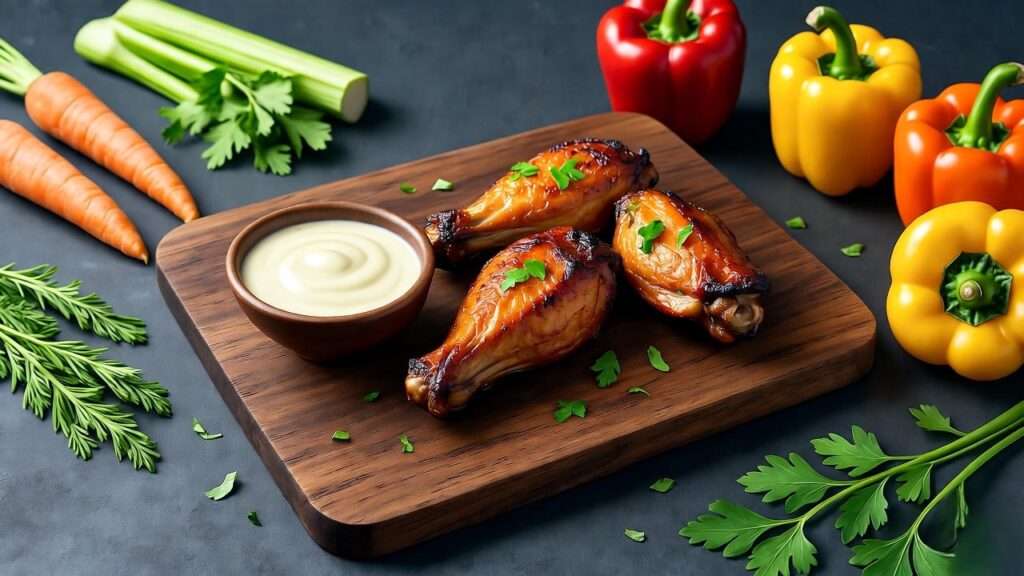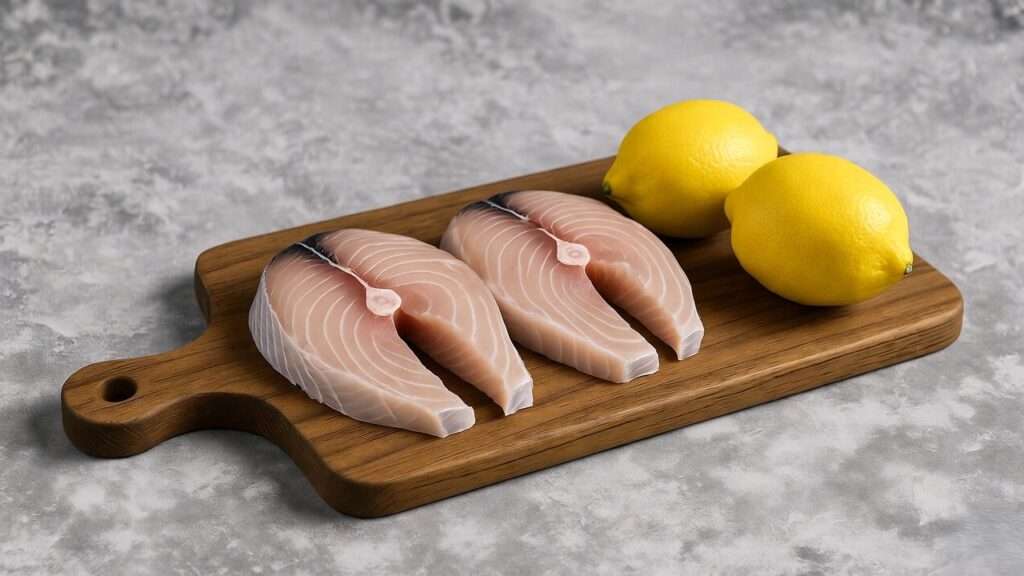Picture yourself savoring the briny, ocean-fresh taste of seafood—without harming a single fish or compromising your plant-based lifestyle. With union seafood, this dream is a delicious reality! Union seafood refers to innovative, plant-based alternatives that mimic the taste, texture, and nutrition of traditional seafood, offering a sustainable and ethical way to enjoy your favorite ocean-inspired dishes. Whether you’re a committed vegan, transitioning to a plant-based diet, or simply exploring eco-friendly food choices, union seafood is a game-changer. But how can you incorporate it into your meals while staying true to your values? This comprehensive guide dives into the world of union seafood, offering practical recipes, nutritional insights, and sustainable sourcing tips to help you enjoy the flavors of the sea—guilt-free. From creamy chowders to zesty sushi rolls, discover how to make union seafood a staple in your plant-based kitchen while protecting the planet.
What Is Union Seafood?
Defining Union Seafood in the Plant-Based Context
Union seafood is a category of plant-based foods designed to replicate the taste, texture, and nutritional benefits of traditional seafood. Unlike conventional fish or shellfish, these products are crafted from vegan-friendly ingredients like seaweed, soy protein, konjac root, jackfruit, or pea protein. Food tech innovators, such as Good Catch and Sophie’s Kitchen, use these ingredients to create plant-based tuna, shrimp, crab cakes, and fish fillets that rival their animal-based counterparts. The result? A seafood-like experience that aligns with vegan ethics and environmental sustainability.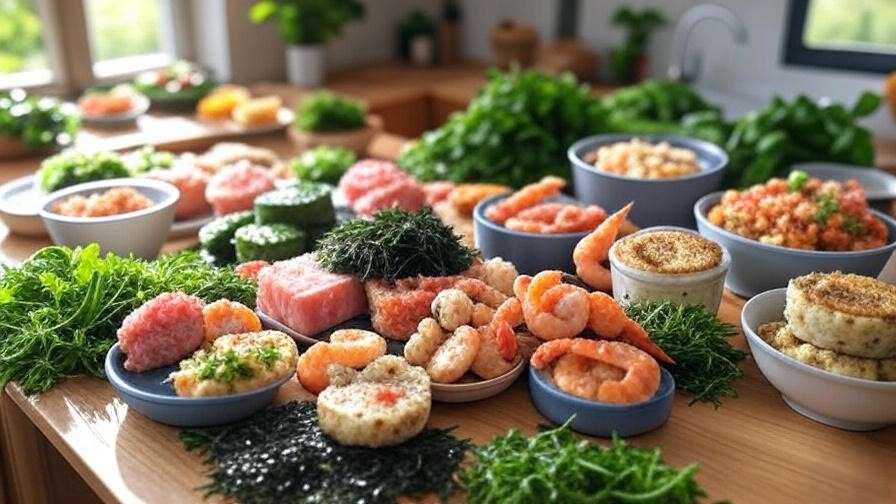
These products are often fortified with nutrients commonly found in seafood, such as omega-3 fatty acids, iodine, and vitamin B12, making them a valuable addition to a plant-based diet. Whether you’re craving a tuna salad sandwich or a seafood paella, union seafood delivers the familiar flavors of the ocean without the ecological or ethical drawbacks.
Why Union Seafood Matters for Plant-Based Diets
The rise of union seafood comes at a critical time. Overfishing has depleted global fish stocks by over 30%, according to the Food and Agriculture Organization (FAO), while traditional fishing contributes to ocean pollution and bycatch that harms marine ecosystems. Union seafood offers a sustainable alternative, significantly reducing your carbon footprint—plant-based seafood production emits up to 90% less greenhouse gas than traditional fisheries, per a 2023 Good Food Institute report.
Ethically, union seafood eliminates the need to harm marine life, aligning with the values of plant-based eaters who prioritize animal welfare. Health-wise, these products are cholesterol-free, low in saturated fats, and often packed with plant-based nutrients, making them a heart-healthy choice. For plant-based dieters, union seafood bridges the gap between indulgence and responsibility, offering a way to enjoy seafood flavors while staying true to your principles.
The Benefits of Incorporating Union Seafood into a Plant-Based Diet
Nutritional Advantages
Union seafood is more than just a tasty substitute—it’s a nutritional powerhouse. Many products are fortified with omega-3 fatty acids (DHA and EPA), which support heart and brain health, and iodine, essential for thyroid function. For example, Good Catch’s plant-based tuna provides 15 grams of protein per serving and is fortified with algae-derived DHA, addressing common nutrient gaps in vegan diets.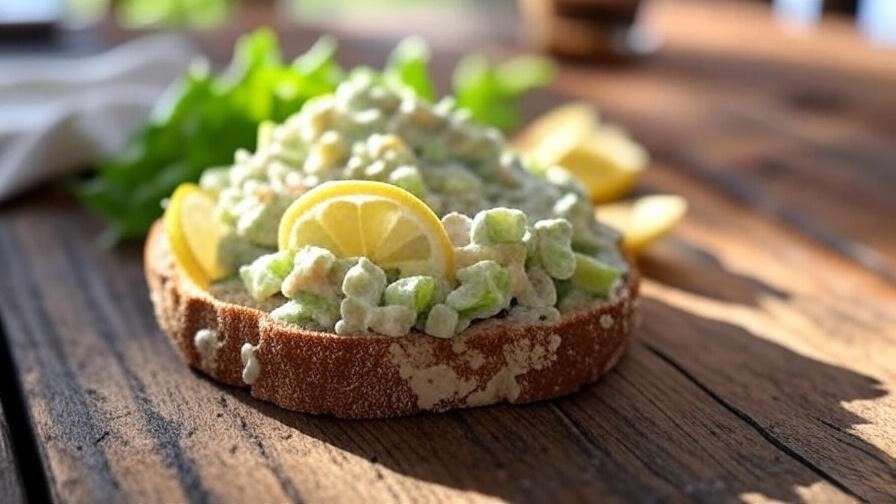
“Plant-based seafood can be a fantastic source of essential nutrients like omega-3s and B12, which are often harder to obtain on a vegan diet,” says Dr. Sarah Ellis, a registered dietitian specializing in plant-based nutrition. Unlike traditional seafood, union seafood is free from mercury and other contaminants, making it a safer choice for long-term health.
Sustainability and Ethical Wins
Choosing union seafood is a win for the planet. Traditional fishing contributes to 14% of global ocean plastic pollution, according to Ocean Conservancy. In contrast, plant-based seafood relies on sustainable ingredients like seaweed, which requires no freshwater or arable land to grow. Many union seafood brands also use recyclable packaging and hold certifications like Non-GMO Project Verified or Fair Trade, ensuring ethical production.
By opting for union seafood, you’re supporting a food system that prioritizes marine conservation and reduces the strain on overexploited fish populations. It’s a small choice with a big impact—both for your plate and the planet.
Versatility in Cooking
Union seafood shines in the kitchen, offering endless possibilities for plant-based meals. From crispy fish tacos to creamy chowders, these products adapt to a variety of cuisines. Their versatility makes them ideal for both novice cooks and seasoned chefs looking to experiment with vegan recipes. Whether you’re hosting a dinner party or whipping up a quick weeknight meal, union seafood delivers authentic flavors that satisfy even the most discerning palates.
Top Union Seafood Products to Try
Popular Brands and Their Offerings
The union seafood market is booming, with several brands leading the charge. Here are some standout options:
- Good Catch: Known for its plant-based tuna, fish fillets, and crab cakes, made with a blend of pea protein, soy, and seaweed for authentic flavor.
- Sophie’s Kitchen: Offers vegan shrimp, smoked salmon, and fish sticks, crafted with konjac root and natural seasonings.
- Ocean Hugger Foods: Specializes in Ahimi, a tomato-based tuna alternative perfect for sushi.
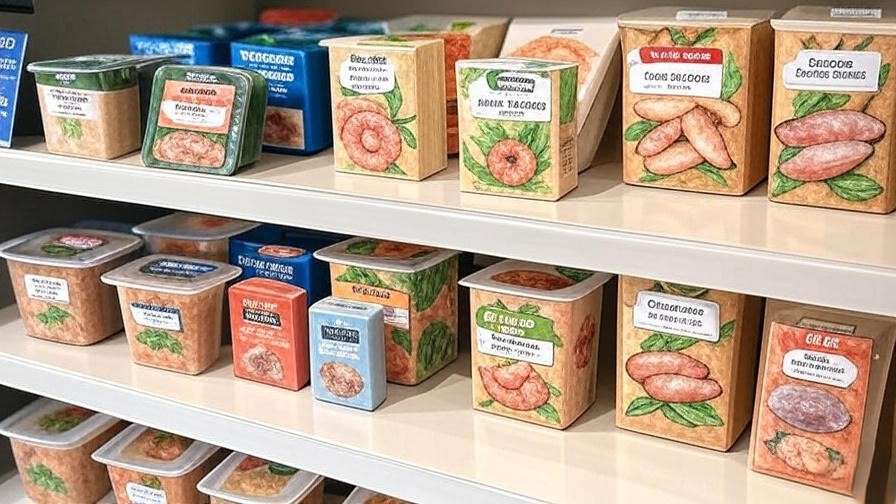
These products are widely available at grocery stores like Whole Foods, Trader Joe’s, and online platforms like Thrive Market or Amazon. Prices typically range from $5–$10 per package, making them comparable to mid-range seafood.
How to Choose High-Quality Union Seafood
Not all union seafood is created equal. When shopping, check labels for clean ingredients—opt for products with natural flavorings like seaweed or smoked paprika over artificial additives. Look for certifications like Non-GMO or Organic to ensure quality and sustainability. For example, Good Catch’s fish-free tuna uses a six-legume blend for protein, while some budget brands rely on fillers like modified starch, which can dilute flavor and nutrition.
Avoid products with excessive sodium or artificial preservatives, as these can detract from the health benefits. Comparing two products, Sophie’s Kitchen vegan shrimp uses konjac root for a chewy texture, while a lesser-known brand might use heavily processed soy isolate, which can taste less authentic.
Delicious Union Seafood Recipes for Plant-Based Diets
Plant-Based Tuna Salad
Ingredients (Serves 2):
- 1 can Good Catch plant-based tuna
- 2 tbsp vegan mayo
- 1 stalk celery, finely chopped
- ¼ red onion, diced
- 1 tbsp lemon juice
- Salt and pepper to taste
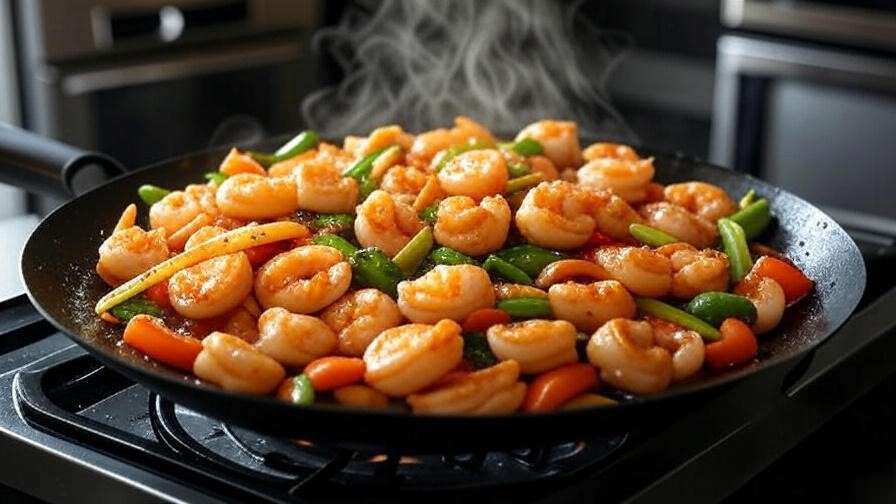
Instructions:
- In a bowl, flake the plant-based tuna with a fork.
- Add vegan mayo, celery, red onion, and lemon juice. Mix well.
- Season with salt and pepper to taste.
- Serve on whole-grain bread, in lettuce wraps, or over a bed of greens.
Tip: Add chopped dill or capers for extra zing. This 10-minute recipe is perfect for a protein-packed lunch, delivering 20 grams of protein per serving.
Vegan Shrimp Stir-Fry
Ingredients (Serves 4):
- 1 package Sophie’s Kitchen vegan shrimp
- 2 cups mixed vegetables (bell peppers, broccoli, snap peas)
- 2 tbsp soy sauce
- 1 tbsp minced ginger
- 2 cloves garlic, minced
- 2 tbsp sesame oil
Instructions:
- Heat sesame oil in a wok over medium-high heat.
- Add garlic and ginger, sautéing for 1 minute until fragrant.
- Add vegetables and stir-fry for 5–7 minutes until crisp-tender.
- Add vegan shrimp and soy sauce, cooking for 3–4 minutes until heated through.
- Serve over brown rice or quinoa.
Variation: Swap vegan shrimp for plant-based scallops for a slightly chewier texture. This dish is a quick, nutrient-dense dinner option.
Union Seafood Sushi Rolls
Ingredients (Serves 4):
- 1 package Ocean Hugger Foods Ahimi (plant-based tuna)
- 1 avocado, sliced
- 1 cucumber, julienned
- 4 sheets nori
- 2 cups sushi rice, cooked
- 2 tbsp rice vinegar
- 1 tbsp soy sauce
- Pickled ginger and wasabi for serving
Instructions:
- Mix cooked sushi rice with rice vinegar and let cool.
- Place a nori sheet on a bamboo sushi mat, shiny side down.
- Spread a thin layer of rice over the nori, leaving a 1-inch border at the top.
- Add a line of plant-based tuna, avocado, and cucumber near the bottom edge.
- Roll tightly using the mat, sealing the edge with water.
- Slice into 6–8 pieces and serve with soy sauce, pickled ginger, and wasabi.
Expert Tip: “For authentic sushi flavor, sprinkle a touch of seaweed powder or furikake on the rice,” says Chef Mia Tanaka, a plant-based culinary expert. This recipe is perfect for impressing guests with a sustainable twist on sushi night, offering 10 grams of protein per roll.
Creamy Vegan Seafood Chowder
Ingredients (Serves 4):
- 1 package Good Catch plant-based fish fillets, cubed
- 2 medium potatoes, diced
- 1 can coconut milk (13.5 oz)
- 2 cups vegetable broth
- 1 tbsp dried seaweed (e.g., dulse or nori), crumbled
- 1 onion, diced
- 2 cloves garlic, minced
- 1 tbsp olive oil
- 1 tsp smoked paprika
- Salt and pepper to taste
Instructions:
- Heat olive oil in a large pot over medium heat. Sauté onion and garlic until translucent, about 5 minutes.
- Add potatoes, vegetable broth, and seaweed. Simmer for 15 minutes until potatoes are tender.
- Stir in coconut milk, plant-based fish fillets, and smoked paprika. Cook for 5–7 minutes until heated through.
- Season with salt and pepper. Serve with crusty bread or oyster crackers.
Nutritional Note: This chowder is rich in potassium (from potatoes) and fiber, making it a hearty, comforting meal for chilly evenings.
How to Source Sustainable Union Seafood
Understanding Sustainability in Plant-Based Seafood
Sustainability is at the heart of union seafood’s appeal. Unlike traditional fishing, which disrupts marine ecosystems, plant-based seafood relies on ingredients like seaweed, which is one of the most sustainable crops on the planet. Seaweed farming absorbs carbon dioxide and requires no fertilizers or freshwater, according to a 2024 study by the World Resources Institute. Many union seafood brands, like Good Catch, prioritize eco-friendly practices, using recyclable packaging and sourcing ingredients responsibly.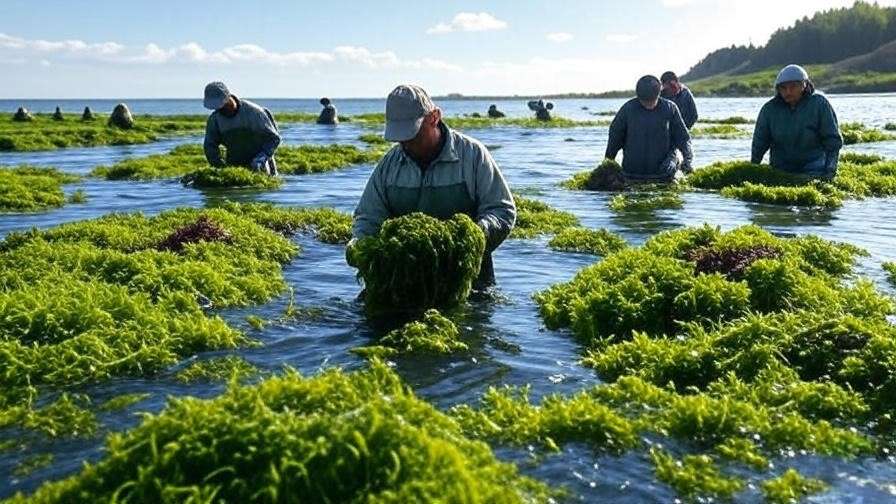
Look for brands with certifications like Marine Stewardship Council (MSC) equivalents for plant-based products or those partnered with organizations like the Good Food Institute. These choices ensure your seafood alternatives contribute to a healthier planet.
Where to Buy Union Seafood
Union seafood is increasingly accessible. Major retailers like Whole Foods, Sprouts, and Trader Joe’s stock popular brands in their frozen or refrigerated sections. Online, platforms like Thrive Market, Amazon, or direct brand websites offer a wider selection, often with subscription discounts. For example, Good Catch’s website provides a store locator and bulk-buy options, making it easy to stock up.
Tip: Check for seasonal promotions, especially around Veganuary or Earth Day, when plant-based products are often discounted. Subscribing to a brand’s newsletter can also unlock exclusive deals.
DIY Union Seafood at Home
Want to get creative? You can make your own union seafood using simple ingredients. Hearts of palm, with their flaky texture, make an excellent base for vegan “crab” cakes, while jackfruit mimics the shreddiness of tuna. Here’s a quick recipe for Jackfruit “Crab” Cakes:
Ingredients (Makes 6 cakes):
- 1 can young green jackfruit, drained and shredded
- ½ cup breadcrumbs
- 2 tbsp vegan mayo
- 1 tsp Old Bay seasoning
- 1 tbsp chopped parsley
- 1 tbsp lemon juice
- 2 tbsp olive oil for frying
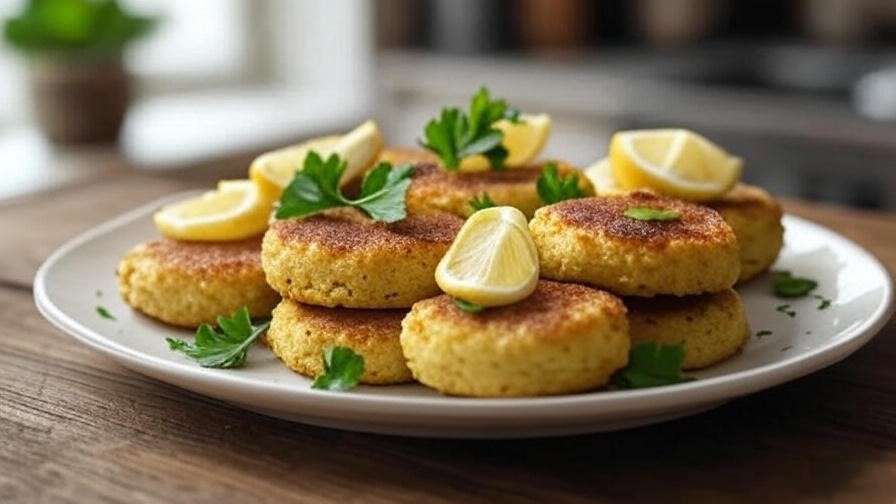
Instructions:
- In a bowl, combine shredded jackfruit, breadcrumbs, vegan mayo, Old Bay, parsley, and lemon juice.
- Form into 6 patties and refrigerate for 15 minutes to set.
- Heat olive oil in a skillet over medium heat. Fry patties for 3–4 minutes per side until golden.
- Serve with tartar sauce or a lemon wedge.
This budget-friendly recipe costs under $5 to make and delivers a satisfying seafood-like experience.
Overcoming Common Challenges with Union Seafood
Addressing Taste and Texture Concerns
Some plant-based eaters worry that union seafood won’t match the taste or texture of real fish. While early vegan seafood products sometimes fell short, modern options have improved dramatically. To enhance texture, try pan-searing plant-based fish fillets for a crispy exterior or marinating vegan shrimp in a seaweed-infused broth for added umami.
If a product tastes too “processed,” experiment with bold seasonings like smoked paprika, dill, or lemon zest. For example, Sophie’s Kitchen vegan shrimp benefits from a quick toss in garlic and olive oil to elevate its flavor profile.
Budget-Friendly Options
Union seafood can be pricier than basic plant-based staples like tofu, but it’s often comparable to or cheaper than high-quality seafood. To save money, buy in bulk from online retailers or opt for store brands like Trader Joe’s vegan fish sticks. Making your own seafood alternatives, like the jackfruit crab cakes above, can cut costs significantly—often under $2 per serving.
Navigating Dietary Restrictions
Union seafood is versatile for various dietary needs. Many products, like Ocean Hugger’s Ahimi, are naturally gluten-free and soy-free, making them suitable for allergy-conscious eaters. Always check labels for allergens like wheat or soy, and opt for brands like Sophie’s Kitchen, which offers allergen-free options. For those avoiding GMOs, look for Non-GMO Project Verified seals.
Expert Insights and Real-Life Success Stories
What Experts Say About Union Seafood
“Plant-based seafood is a revolutionary step toward sustainable eating without sacrificing flavor or nutrition,” says Dr. Michael Greger, author of How Not to Die. A 2023 report from the Good Food Institute notes that plant-based seafood sales grew by 25% year-over-year, reflecting growing consumer demand for eco-friendly alternatives. Experts agree that union seafood is a key player in reducing the environmental toll of traditional fishing.
Real People, Real Results
Take Sarah, a busy mom from Seattle who transitioned to a plant-based diet in 2024. “I missed seafood tacos, but Good Catch’s fish fillets changed everything,” she says. “They’re quick to cook, and my kids love them!” Sarah uses plant-based fish in tacos with mango salsa for a 15-minute family meal that’s both nutritious and sustainable.
FAQs About Union Seafood in Plant-Based Diets
Is union seafood as nutritious as real seafood?
Union seafood is often fortified with key nutrients like omega-3s, B12, and iodine, making it a comparable alternative. For example, Good Catch’s products include algae-derived DHA, essential for brain health.
Can union seafood taste as good as traditional seafood?
With the right preparation, absolutely. Seasonings like seaweed, Old Bay, or lemon juice enhance the oceanic flavor. Pan-searing or grilling can replicate the texture of fish or shrimp.
Is union seafood safe for people with shellfish allergies?
Most union seafood is allergen-free, but always check labels. Brands like Sophie’s Kitchen offer shellfish-free options safe for those with allergies.
How does union seafood impact the environment?
Plant-based seafood has a significantly lower environmental footprint, reducing carbon emissions by up to 90% compared to traditional fishing, per the Good Food Institute.
Conclusion
Union seafood is a delicious, sustainable, and ethical way to enjoy the flavors of the ocean while staying true to a plant-based diet. From nutrient-packed tuna salads to comforting chowders, these products offer endless culinary possibilities without harming marine life or the planet. Whether you’re exploring brands like Good Catch or whipping up DIY jackfruit crab cakes, union seafood makes it easy to eat responsibly and deliciously. Try one of the recipes above or visit your local grocery store to discover the world of plant-based seafood. Have a favorite union seafood dish? Share it in the comments or tag us on social media—let’s inspire each other to eat greener!

